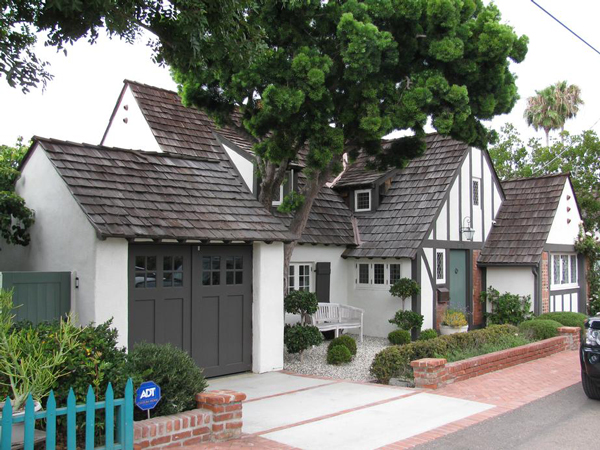 |
|
August 2015 Advocacy Notes
September begins the fall season, which prompts trips to our picturesque backcountry for the kick off of apple season, in addition to several new historical designations. The seasonal drive to Julian passes by farms with landscapes composed of orchards and pumpkin patches. The rhythmic rows of this setting, a cultural landscape, would dismay many if lost. While the concept of protecting a cultural landscape is not new, efforts to retain whole heritage landscapes are finding their way into the preservation mainstream.
Two recent examples, one preserved for the future and the other lost forever, demonstrate how cultural landscapes, both their preservation and their loss, impact sense of place for the community. The first example is a setting of three historic houses on Fern Glen Road in La Jolla. 350 Fern Glen, the center building, was recently designated historic. Included within this designation is an English garden wall and arbor along with several fruit trees. If these features were removed, this landscape would be severely diminished. Loss of the connectivity between buildings results in a loss of integrity for the landscape as a whole. SOHO is thankful for the thoughtful foresight of the City of San Diego's Historical Resources Board; these buildings will retain their connectivity in perpetuity, the integrity of the landscape will be maintained, and sense of place for Fern Glen Road will be further preserved.
The second example is the long-established, and now long gone, canopy of pepper trees along the Juan Street corridor in Old Town. When the Juan Street Improvement Project was developed five years ago, the community was assured that none of the pepper trees would be lost. Last week, the city removed all but one tree from the western side of the road, leaving a barren concrete corridor. These trees date back 70 years, from before Juan Street was paved and the oldest house in San Diego, the c. 1817 Carrillo adobe, became a pro shop for the golf course. This landscape has been chipped away at over the years, and now it is lost forever. While the fate of the eastern side is not yet determined, there is little faith the project team will uphold the best interest of the Old Town community, even if -to simply plant new trees. Throughout this process, the community has advocated the importance of these trees, but when a project team does not value, nor even acknowledge the existence of culture within a landscape, the community is destined to lose. For this principle reason, to ensure our heritage has a context, the community must support and promote the preservation of cultural landscapes. |
SOHO eNEWS2025 2024 2023 2022 2021 2020 2019 2018 2017 2016 2015 |
Mailing - PO Box 80788 · San Diego CA 92138 | Offices - 3525 Seventh Avenue · San Diego CA 92103
|




